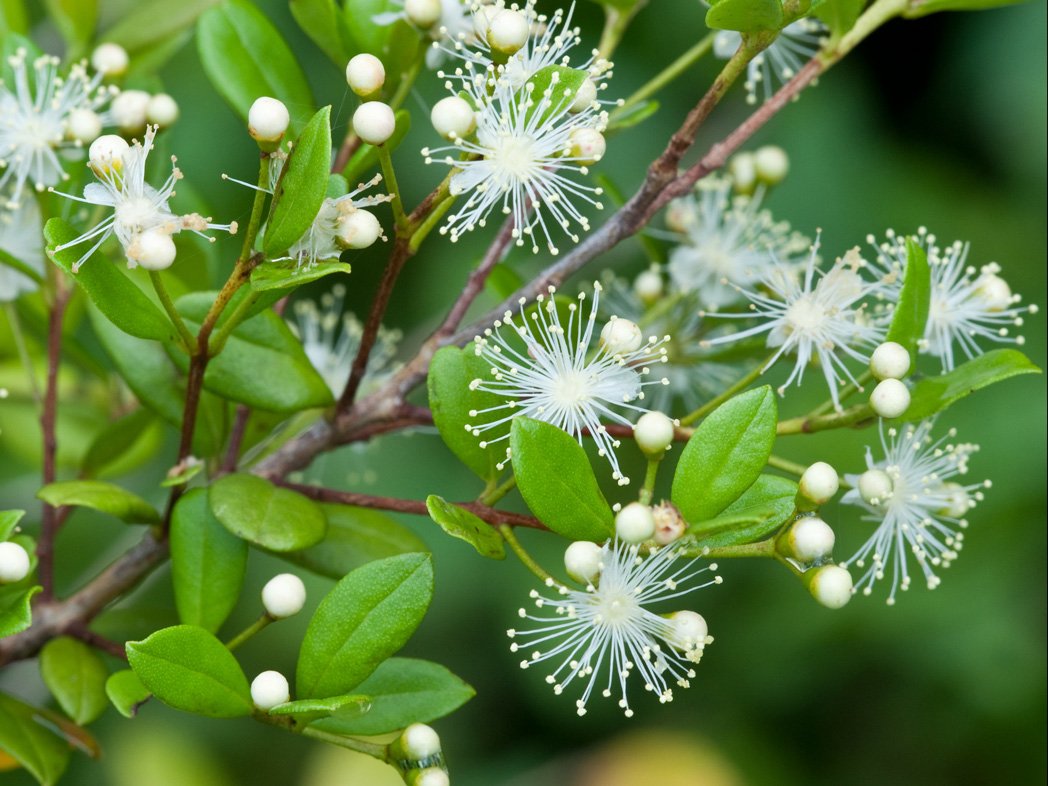These Plants Loved by Birds and Butterflies
Simpson Stopper/Myrcianthes Fragrans
February 23, 2019
I wanted to discuss a few more natives that would be suitable for our newly sustainable Palm Beach gardens. I’m sure most of you know that milkweed, Asclepias is the larval host plant for monarch, queen and soldier butterflies, as well providing nectar for numerous other butterflies and bees. Florida has 21 native Asclepias species, including rose milkweed, A. incarnata; butterfly milkweed, A. tuberosa; and white milkweed, A. variegata. The scarlet milkweed A. curassavica found in many retail outlets is not native, and while it will still attract numerous butterflies, it can transmit Ophryocystis elektroscirrha infection that kills monarchs and should be avoided.
Just make sure to purchase your milkweed from a reliable source and confirm that it is a native variety. Pink milkweed is lovely in moist sunny gardens, with flowers ranging in color from pale pink to rose. White milkweed is a shorter, more delicate plant with slightly smaller flowerheads. Butterflyweed is the most showy and is recognized by its clusters of bright reddish-orange flowers. It is more suitable to dry or slightly moist soil in sunny locations.
Put these slightly behind other plants, where they won’t be unsightly after being defoliated by hungry butterfly larvae. It’s great fun to watch the caterpillars grow and then form their pupae, and even more exciting to watch as they emerge as gorgeous butterflies. And then there’s the joy of having them fluttering about your gardens.
Coreopsis, sometimes called tickseed, is Florida’s state wildflower, and there are 11 native species. Coreopsis Leavenworthii is most common and is endemic to Florida, meaning it occurs nowhere else in the world. Its profuse yellow flowers light up a garden, while providing nectar for butterflies, bees and other pollinators.
This is a short-lived perennial in South Florida, but will readily reseed in moist areas so you’ll always have plenty of flowers. In the wild, this grows in wetlands in full sun, so try to provide similar conditions in your landscape. It also makes a great container plant — and looks terrific as a border or along paths or entryways. The 1-2 inch flowers have dark centers surrounded by yellow ray florets with scalloped edges above narrow bright green leaves. This will reach a height of 1 to 3 feet on airy stems and will bloom throughout the year.
If you’re looking for a tree, one of the best natives is Simpson's Stopper. With ornamental bark, fragrant flowers and decorative orange fruits that birds love, this versatile plant also known as twinberry is a total winner. The fragrant white flowers attract pollinators, while buntings, cardinals, blue jays and mockingbirds enjoy the fruits and find protection in the dense canopy.
In a sunny location, this will become a large dense shrub, suitable for a hedge, and needing little maintenance. Grown in the shade, it will be taller with a looser habit. The light tan bark exfoliates to reveal lovely patterns of reddish brown beneath, providing year-round interest. New growth of the dark evergreen leaves emerges in colors ranging from pale chartreuse to a deep red, providing stunning contrast. When crushed, the leaves have a spicy, citrusy-like scent.
Simpson's Stopper can grow to 20 feet or more, depending on growing conditions, is drought and salt tolerant, and will be quite wind resistant once established. Cold hardy to 25 degrees, it does not suffer from any random freezes and will grow along the coast as far north as Charleston, S.C. If you have a smaller landscape, there is a dwarf variety, "Compacta," which only reaches 5 feet. Simpson's Stopper is listed as a threatened plant species on the Florida Department of Agriculture’s threatened plant list. All the more reason to add this wonderful native to your garden.
Original article on the Palm Beach Daily News is HERE.



